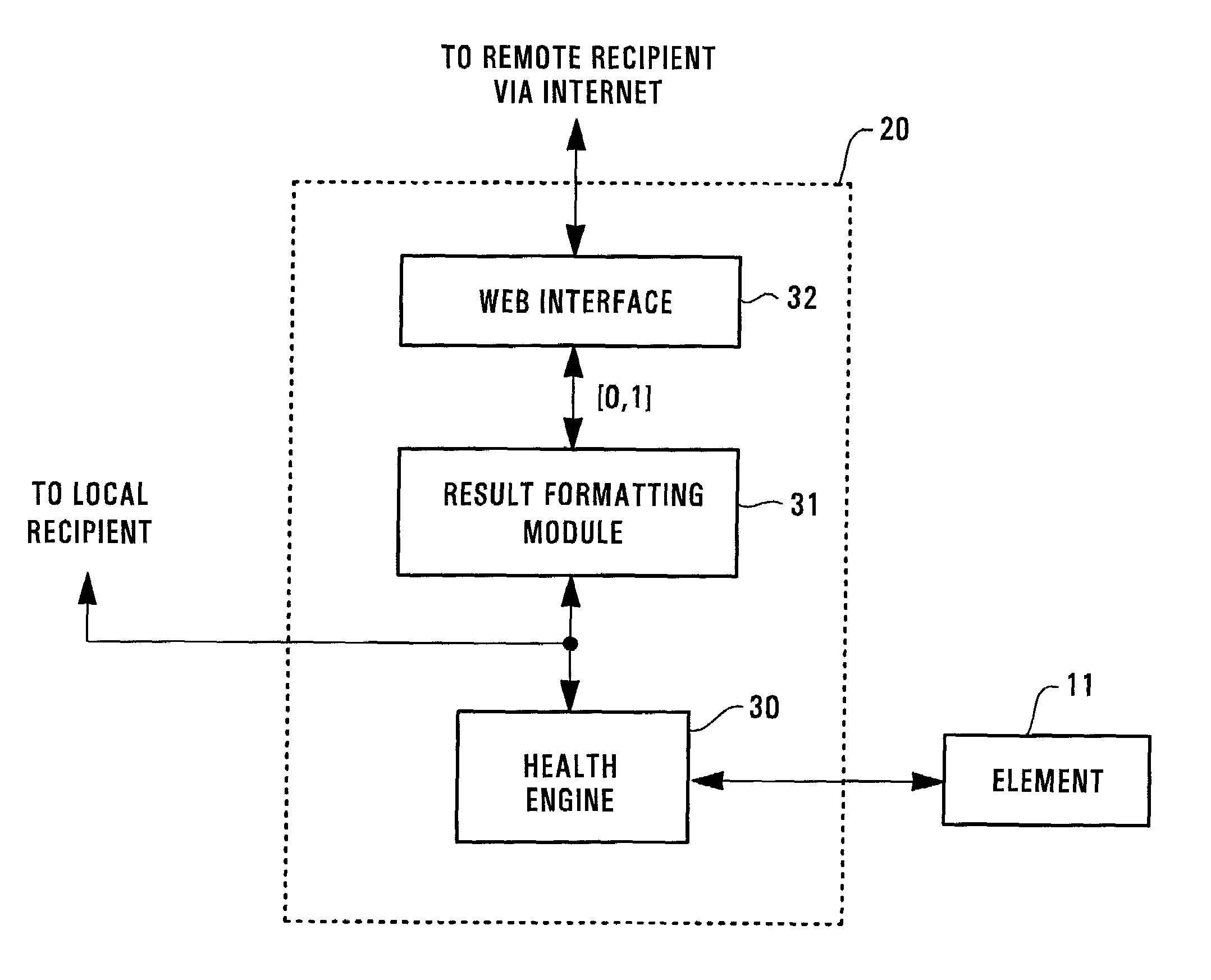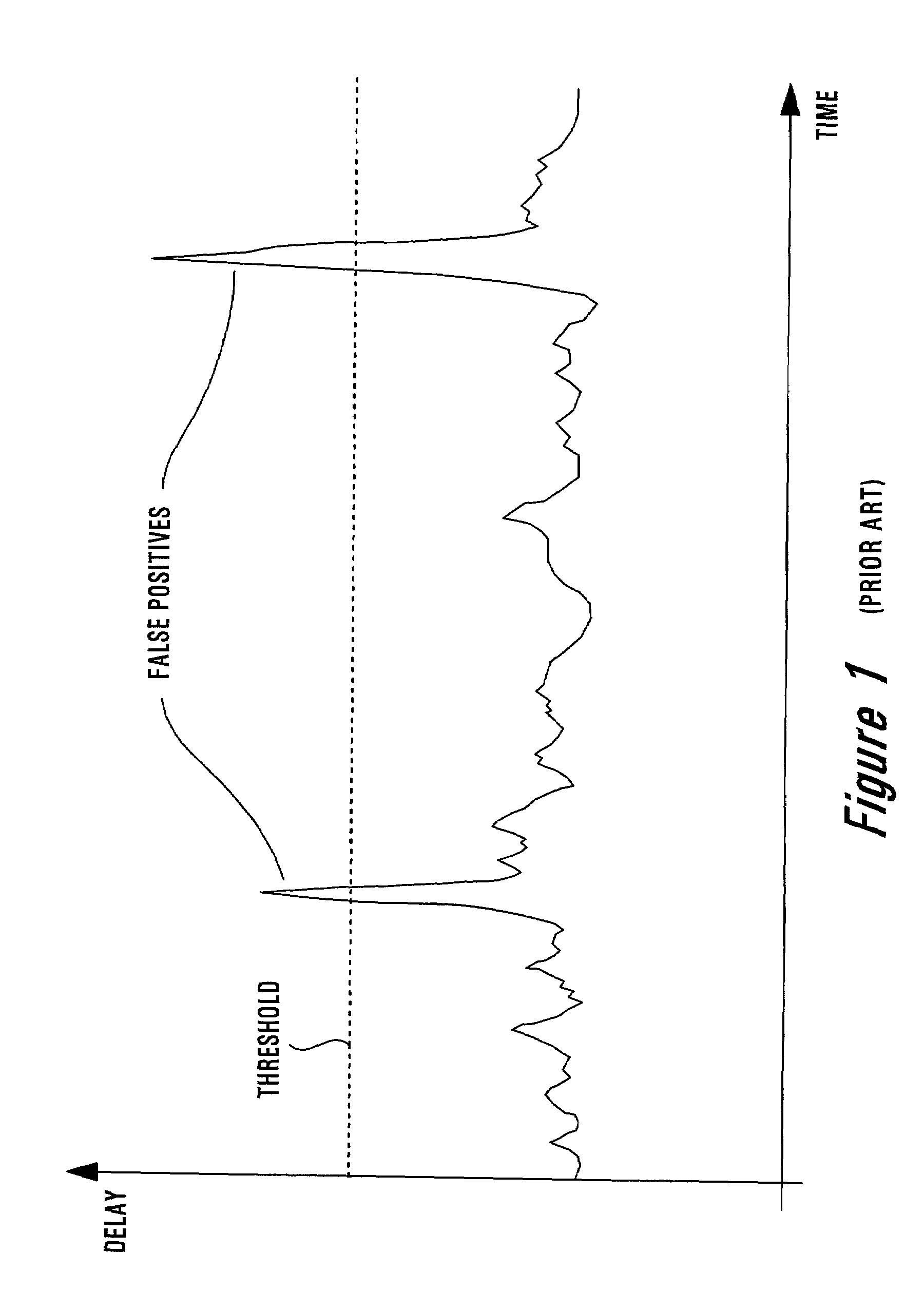Assessing health of a subsystem or service within a networked system
a networked system and subsystem technology, applied in knowledge representation, instruments, computing models, etc., can solve the problems of system administrators being staffed around the clock, system administrators typically work under greater and greater stress, and the prior art approach is still not suitable for measuring large dynamic distributed systems with large numbers of elements, so as to minimize the labor-intensive process of assessing health and reduce the engineering cost of providing health assessmen
- Summary
- Abstract
- Description
- Claims
- Application Information
AI Technical Summary
Benefits of technology
Problems solved by technology
Method used
Image
Examples
Embodiment Construction
[0028]FIG. 2 shows an overview of a target system 10, with one of its elements (i.e., element 11) being monitored by a health assessment system 20. In accordance with one embodiment of the present invention, the health assessment system 20 assesses the health of the element 11 of the target system 10. Alternatively, the health assessment system 20 may assess the health of the target element 11 by receiving measures from other elements in the system 20 in addition to the measures received from the element 11. To assess the health of the entire target system 10, each of the elements (i.e., elements 11-15) may be monitored and assessed by a system identical to the health assessment system 20.
[0029]FIG. 2 only illustratively shows the target system 10, which includes the elements 11 through 15 that are operationally connected together. In practice, the number of elements within the system 10 can be more or fewer than those shown in FIG. 2. In addition, the system 10 may take a different...
PUM
 Login to View More
Login to View More Abstract
Description
Claims
Application Information
 Login to View More
Login to View More - R&D
- Intellectual Property
- Life Sciences
- Materials
- Tech Scout
- Unparalleled Data Quality
- Higher Quality Content
- 60% Fewer Hallucinations
Browse by: Latest US Patents, China's latest patents, Technical Efficacy Thesaurus, Application Domain, Technology Topic, Popular Technical Reports.
© 2025 PatSnap. All rights reserved.Legal|Privacy policy|Modern Slavery Act Transparency Statement|Sitemap|About US| Contact US: help@patsnap.com



